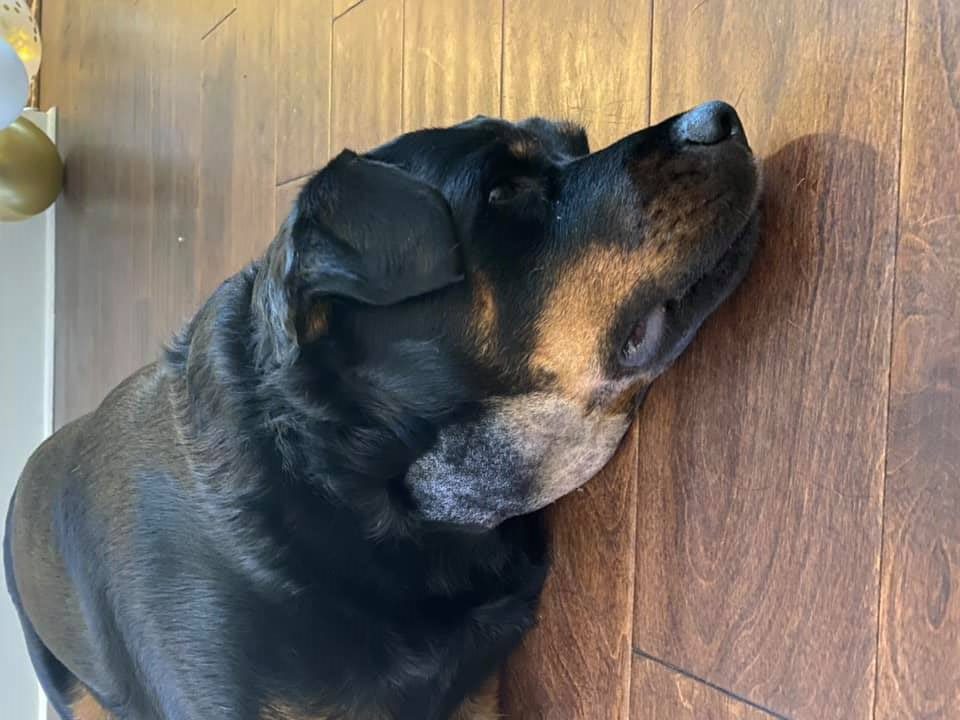Dog lymph nodes are small, bean-shaped structures that play a crucial role in the body’s immune response.
In a healthy dog, these nodes are typically small and barely noticeable, similar in size to a pea in smaller breeds and a grape in larger ones.
However, their size can significantly increase due to various conditions such as infections, allergies, or diseases like lymphoma.
Understanding the size and condition of a dog’s lymph nodes is essential as it can provide valuable insights into the overall health of your furry friend.
Key Takeaway
- The size of a dog’s lymph nodes can range up to half an inch, but they can become significantly larger, and in some cases even visible on the skin surface, when swollen due to conditions such as infections or diseases like lymphoma.
- On an ultrasound, the normal size of a dog’s lymph node typically measures approximately 0.3-1 cm.
- In a healthy state, a dog’s lymph nodes are usually not easily felt as they are small and soft, but when they become swollen due to conditions like infections or diseases, they can be palpable and noticeable under the skin.
How Big Are Dog Lymph Nodes?

An adult dog’s lymph nodes range from 1/8 inch (in healthy dogs) to 1 inch in diameter (3-25 mm) when they are swollen.
Lymph nodes can be found all over a canine’s body; the largest being located in the head and neck region.
The size of dog lymph nodes varies, but most should feel the size of a marble or less, depending on the size of your pet.
Swollen lymph nodes can vary in size too, but they are typically larger than normal and may feel firm or rubbery to the touch.
See also: Can Dogs Live Without Lymph Nodes?
What Is Normal Lymph Node Size Dog Ultrasound?

Normal lymph nodes in dogs are typically less than 1 cm or 0.4 inches long. In some cases, they can be larger – up to about 2 cm or 0.8 inches – but this is considered the maximum normal size for a healthy canine lymph node.
If an ultrasound detects any lymph nodes that measure greater than this amount, it may indicate an underlying illness or infection that requires further investigation and treatment from your veterinarian.
It is also important to note that although ultrasound is a valuable tool for diagnosing certain conditions in dogs, its accuracy can be affected by differences in individual anatomy and positioning of the animal during the scan.
See also: Can Dog Lymph Nodes Be Removed?
How Big Are Swollen Lymph Nodes In Dogs?
Swollen nodes are usually ½ to 1 inch (12 -25 mm) across. In cases of lymphoma, it’s common for dogs to have lymph nodes 3-to-10 times their normal size.
Large swollen lymph nodes may be symptomatic of a serious underlying medical condition such as cancer or an autoimmune disorder and should be examined by a veterinarian as soon as possible for proper diagnosis and treatment.
Treatment for enlarged lymph nodes depends on the underlying cause and may include antibiotics, anti-inflammatory medications, chemotherapy, or radiation therapy if needed.
See also: Can Dogs Lymph Nodes Swell From Allergies?
Can You Normally Feel Dog’s Lymph Nodes?
In healthy dogs, lymph nodes are typically small enough that they are barely noticeable. They should feel fairly round, uniform in shape, and semi-hard.
Generally, they should be the size of a pea in small dogs to the size of a grape in larger dogs. Lymph nodes can be found by careful palpation to identify these small soft structures.
The palpable lymph nodes are called peripheral lymph nodes, which indicates that they are on the outside. Internal lymph nodes are also present, but unless they are very large, they cannot be felt.
It is only when the lymph nodes are swollen due to conditions like infections or diseases that they become more prominent and can often be felt or even seen under the skin.
See also: 9 Causes Of Swollen Lymph Nodes In Dogs
What Size Is a Concerning Lymph Node In Dogs?
Any lymph node that is larger than 1/2 inch is considered to be concerning.
It is also important to consider if the lymph node has grown quickly or gradually.
If the lymph node grows rapidly, this could indicate an underlying infection or tumor and should warrant immediate medical attention from your veterinarian.
If the enlarged lymph nodes persist despite treatment of an infectious cause, then further testing may be required to determine if there are any other underlying causes.
See also: Where Are Dog Lymph Nodes Located?
Dog Popliteal Lymph Node Size
In healthy dogs, the average length of the popliteal lymph nodes (PLNs) is approximately 0.57 cm, with a range of 0.3–0.9 cm.
Other dimensions include a mean height of about 0.84 cm, ranging from 0.4–1.5 cm, and a mean width of around 0.71 cm, ranging from 0.3–0.9 cm.
These lymph nodes, like others in the body, should be small enough that they’re barely noticeable—often described as being pea-sized in small dogs to grape-sized in large dogs.
It’s only when the lymph nodes are swollen due to conditions such as infections or diseases that they become more prominent and can often be felt or even seen under the skin.
Swollen lymph nodes in dogs can be caused by several underlying health issues, including bacterial, viral, and fungal infections.
Diseases such as Lyme disease, ehrlichiosis, and parvovirus can also cause lymphadenopathy.
See also: How To Check a Dog’s Lymph Nodes
Are Swollen Lymph Nodes In Dogs Hard?
Swollen lymph nodes in dogs can vary in consistency, but they often feel firm or rubbery to the touch.
They are typically more prominent than normal lymph nodes and can sometimes be seen or felt under the skin.
Lymph nodes that are enlarged due to a neoplastic condition, such as cancer, are usually painless and hard.
However, it’s important to note that not all hard or swollen lymph nodes indicate cancer. They can also be caused by infections, inflammation, or other diseases.
If you notice any changes in your dog’s lymph nodes, it is always best to consult with a veterinarian for a proper diagnosis.
In Conclusion
In conclusion, the size of a dog’s lymph nodes can serve as an essential indicator of their overall health.
While these nodes are typically small and barely noticeable in a healthy dog, an increase in size can signal various health conditions such as infections or diseases like lymphoma.
It’s crucial for pet owners to be aware of this and to regularly check their dog’s lymph nodes for any changes.
If swelling or hardening is noticed, it’s advisable to consult with a veterinarian promptly for a proper diagnosis and treatment plan.





Leave a Reply